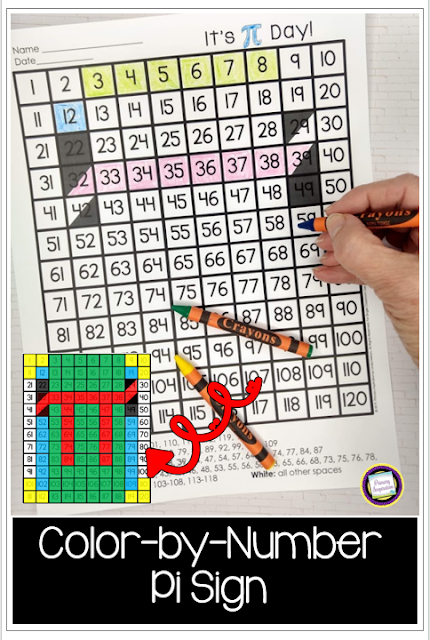We've all been there. You bravely push your cart into Target. You vow that you won't even glance at the Dollar Spot. Suddenly the hidden electromagnet in the cart activates and you're sucked into the world of really cool stuff that you probably don't need. "I can always use this as a math manipulative," you think. After all, everybody needs math tools for effective hands-on learning, right?
And then you take that new math tool home or to school. It's still living quietly in a drawer, smiling mockingly at you whenever the drawer slides open, hanging out with its friends from Dollar Tree.
As an Amazon Associate, I earn from qualifying purchases.
This blog series will give you ideas for using those potential math tools in your neglected stash, along with some other inexpensive items that you may never have thought about using for math teaching and learning!
Let's kick off this series by talking about Hashtag Building Blocks from Target. At 72 for a dollar, these could go really far at small cost. Read on for a few ideas, broken down by grade levels. Take a glance even at the ones you don't teach - you never know what might spark an idea that's perfect for your students!
PreK/Kindergarten
* Counting: Put a bunch of hashtags in a big bowl. Partner up your students and have them take turns reaching in and pulling out a handful of hashtags. PreKs can put them in a line so the partners can count them together. For your kindergartens, use them with ten frames. Show them how to count on from ten for teen numbers.
* Comparing Numbers: Set up the same as for counting. This time, both students pull out a handful of hashtags on each turn. Estimate who has more. Then line them up next to each other to prove the estimate.
* Do you use sensory bins? Mix some hashtags and magnetic numerals in a bin with confetti/beans/colorful rice/whatever you use for filler. Have your students use tweezers (build those small muscles!) to pull out a numeral and then hunt for and pull the appropriate number of hashtags to match it.
First Grade
* Addition and Subtraction Fact Families: Have your students reach into that bowl again and pull out ten tags, using only two colors. For instance, they could pull out 4 orange and 6 green, or 8 red and 2 yellow. {Sanity Saving Hint: You may find it easier to just put two colors in the bowl and have them choose any ten. Just sayin'.} Then they'll write the addition and subtraction equations for ten that use those numbers. If they work as partners, they can check each others' work! Differentiate by using higher or lower numbers.
* Measurement: Hashtags are great to use for non-standard measurement. Let your students loose in your classroom with rulers they've created!
Second Grade
* Odd and Even: Back to grabbing handfuls of hashtags again! Have your students fold a paper in half and write odd on one column and even on the other. Each time they grab a handful of hashtags, they'll line them up like this and then write the number in the correct column.
Partners/not partners is a great way to make a visual representation of odd and even numbers!
* Arrays: Get ready to multiply by building arrays. Any manipulative would do the job, but you've got hashtags, so why not use them?
Third Grade
* Perimeter: Your students can use hashtags to build 2D shapes. Set them up around the classroom and do a gallery walk. Your students will love moving around to see the shapes and calculate their perimeters.
As you see, there are SO many ways to use hashtags! Could you use other math tools for these activities? Well, sure, but you've got these cute little hashtags, so let's USE them!
Stay tuned {aka follow ;)} to see the next posts on offbeat math tools! In the meantime, here's another tool that I'll bet you already have, or your students probably have a few million of and would probably contribute! No, it's not Legos, but good try! These would probably hurt like heck when you step on them in the night, too. Visit the post
here!
Crazy tools are great fun, but sometimes you might need something more. I've put together some info about a few more traditional math manipulatives. As is my "tradition", I've tucked two free games into it for you!
Click here or on the picture below to learn more about these math tools!
How are you using hashtag building blocks in your classroom? Please share!
Happy Teaching!













































